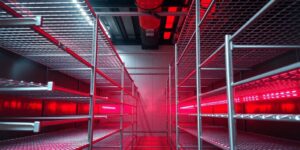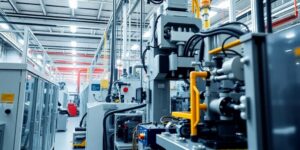Suppose you’re in the business of finishing metal parts during production (such as parts that go into cars, appliances, airplanes, or somewhere else entirely). In that case, you might be considering switching from liquid paint to powder coating. Indeed, most manufacturers seem to have the same dilemma these days. But what are the benefits of converting from liquid paint to powder coating?
Powder coating is considered more durable than wet paint, safer for the environment and the workers, and less prone to fading. However, it can be complicated to match the desired color with powder (not as easy as paint mixing), and the initial investment into a powder coating system may appear too steep.
Most manufacturers want to know if that investment is truly worth it. What do you get for the high upfront costs of a new powder coating facility?
Powder Application
Powder coatings are classified into two categories based on the type of their resin component:
- Thermoplastic powder coating – it melts and flows when heated and has the same chemical composition when cooled down. Thermoplastic powders are epoxy, acrylic, polyester TGIC, and others.
- Thermosetting powder coating – also melts and flows but chemically cross-links when heated again. Nylon, polyester, and polyvinyl chloride are some examples of thermosetting powder.
The equipment you need for the powder coating process is slightly different than that used for liquid painting.
The most common method for applying a powder coat is through the use of an electrostatic spray gun. This type of gun charges the powder particles with electrostatic energy, then shoots them at the metal surface you want to paint. The charged particles are drawn to the metal’s electrically grounded surface and adhere to it without a problem.
Another way of applying powder coating is by dipping preheated metal parts into powder in a fluidized bed.
Once the powder color is applied, the metal part needs to dry. Unlike with liquid paint, air drying is not enough. For a powder-coated part to dry, you need to have curing ovens for temperatures over 400F.
If you decide to install a powder coating line in your operations, you can expect several chief benefits.
Safer, More Rewarding Work Environment
Liquid paint contains volatile organic compounds or VOCs for short. These compounds are highly flammable and toxic. Storing wet paint carries a specific risk with it because carelessness can lead to hazardous chemical fires. Furthermore, operators who work in the liquid painting must wear special protective suits and respirators to protect their health. Even then, they are exposed to high risks of respiratory problems and other health conditions.
The dry powder does not contain any VOCs. It is infinitely safer for operators to handle since they need to wear only dust masks when applying powder. There is no risk of fire, and the risk of respiratory illness is brought down to a minimum.
Moreover, a conventional liquid coating is a significant source of industrial pollution because of its VOCs. Once the wet paint is shot out of a spray gun, its toxic vapors stay in the air and spread, posing a hazard to the environment in general. With liquid painting, there is also quite a bit of leftover paint that can’t be reused, and disposing of it is subjected to strict environmental regulations.
In contrast, the powder coating material is not a threat to our planet. It doesn’t release any toxic compounds into the air, and most of it is either used or can be reclaimed, meaning there is far less of it for disposal than in the case of wet paint.
All of this leads to a safer work environment and operators who feel more comfortable in their workplace.
Increased Productivity
If a mistake is made during the liquid coating process, correcting it is both costly and time-consuming.
Powder coating is much easier to apply and, if the mistakes are caught before the curing process begins, they can be fixed without much effort. Operators that handle powder coating don’t need as extensive training as those who work with wet paint.
The entire coating process is sped up through the use of powder because it doesn’t take as long to dry as the liquid coating. The curing is relatively short, and a metal part doesn’t have to be handled delicately after it – it can immediately go to the next phase of production, such as assembly or packaging. Clean-up and maintenance procedures are also simpler to complete.
Overall, once you switch to this coating method, you can expect to coat more items on any given day. According to one case study, Baker Manufacturing coated between 900 and 2000 more items per day after switching to powder.
Return on Investment
One more significant benefit to turning to a powder coating system is an excellent return on investment (ROI).
Even though a powder coating facility costs more to install and set up, in the long run, you can expect to save money because of the following:
- No need for expensive operator training
- Reduction in utility costs (electric, gas, water)
- No expenses for hazardous waste disposal
- Greater yield
- Improved application efficiency
- Ability to reclaim powder overspray
These are just a few examples of how your budget will quickly recover from the initial investment into a powder coating system. If you rely on a third-party powder coating service, depending on your coating needs, you can expect to eliminate those costs as well (plus the freight of the parts). In some cases, a liquid paint system can be four times more expensive than a powder one.
Liquid Booths vs. Powder Booths
A common question in the process of transitioning from one coating method to another is whether you can use a liquid paint booth as a powder spray booth.
In theory, this is possible. However, it is not recommended.
Typically, wet paint booths are built for larger airflow so that toxic fumes can be pulled faster from the space. This doesn’t work well for powder since you will be pulling powder away from the metal surface you’re trying to coat.
Additionally, if you’re planning to continue your liquid paint operations, it is unwise to use powder and liquid in the same booth. The filters would get plugged up quickly, and it would only be a matter of time before the entire space becomes an enormous safety hazard because paint VOCs have nowhere to go.
In short, if you want to do it right, setting up a separate booth for powder coating explicitly built for the purpose is the best way to go.
Conclusion
Industrial coatings of metal parts are necessary for decorative purposes and corrosion resistance and protection against environmental damage. Liquid painting and powder coating are the two primary ways of coating metal.
If you are a manufacturer interested in investing in a new powder coating system, you’ll find that the investment return is phenomenal. Not only that, but your operators will be safer, and your coating material won’t pose a threat to the environment. The powder is easier to apply than wet paint, and it can also be recollected and reused, meaning you will have minimal expenses.
Your facilities will be able to paint parts faster, and your customers will be satisfied with their paint’s durability. If you have any questions about switching to powder coating, feel free to reach out to GAT Systems. We will be happy to s





